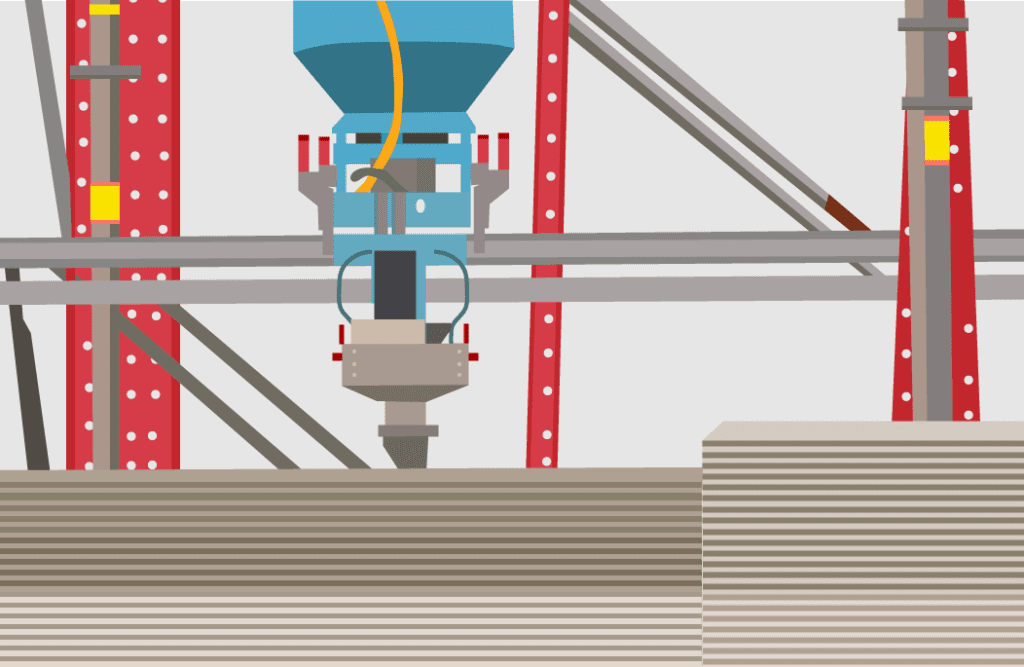What are the pros and cons of 3D printed homes?

Wondering what the pros and cons of buying a 3D printed home are? In this blog, we explore the benefits and drawbacks of this relatively new technology.
The benefits of 3D printed homes
There are many pros to 3D printing homes, from the time it takes to construct a property to being more environmentally sound than traditionally made buildings.
Takes less time to construct
One of the major advantages of 3D printing properties is that they take a lot less time to build. The amount of time a building takes to construct using this new technology will depend on how big the house is, but it’s been reported that 3D printed homes could take as little as 12 hours to construct. The printer only creates the walls and foundations of the building, but considering framing a traditional house tends to take about a month, this is a big difference.
Cheaper than other construction methods
3D printing houses tends to be around 20-40% cheaper to construct than traditional construction methods. This is because there is less labour involved; instead of having to hire a whole team, just a few operators are needed to oversee the process. And as the process takes less time, this can make a significant difference to costs.
Once the walls and foundations have been created, more workers might be required to finish off the building process – such as installing wiring and windows – but the work that the 3D printer does is still significant.
Reduced risk of construction errors
Traditionally constructed homes are more susceptible to human error throughout the construction process as multiple people are involved in the process. On the other hand, when homes are being 3D printed, the structure of the building is made solely by the 3D printer. This means that there’s less of a risk of construction errors – as long as the blueprints that are fed into the 3D printer are correct.
Reduced construction waste

Fewer construction errors means that less waste is produced. On top of this, 3D printing a home tends to produce less waste as the machine calculates exactly how much material is needed to complete the job.
Safer method of construction
With fewer workers involved in the construction process, there is less risk that someone will get hurt.
Can use eco-friendly materials
One of the best things about 3D printing is that you can use almost any material in the construction process. This means that homes can be created from materials that would have gone to waste.
New research suggests that the sand component used to make concrete could be replaced by recycled glass to reduce its environmental impact. Similarly, Azure Printed Homes has begun to create homes made from 60% recycled plastic waste that would have otherwise gone to landfill.
Incredible potential to help solve housing shortages

Given the speed in which 3D printed buildings can be created as well as their relative affordability, 3D printing homes have an incredible potential to help build homes quickly and affordably in order to combat housing shortages.
The cons of 3D printed homes
The majority of drawbacks for 3D printing properties are related to how new the technology is.
Legislation hasn’t caught up with this new technology
Safety and regulatory standards have unfortunately not caught up with this new technology, so it might be a little while before this construction method is adopted on a wider scale. Hopefully the recent 3D printed housing project in the UK will help kick-start these conversations.
Designers are still unfamiliar with the technology

Designers and architects are an important factor in the construction process, and at the moment they are likely to be unfamiliar with how to design properties for 3D printing. Thankfully, this will change in time as the technology becomes more popular in the UK.
Still have questions? Read our blog on 3D printed home FAQs.
Make sure to get 3D printed home insurance
If you’ve decided to take the plunge and get a 3D printed house, you’ll need an insurance policy that’s just as special as your home. At Adrian Flux, we offer specialist 3D printed home insurance that covers your property for the very unique needs of 3D printed housing.







